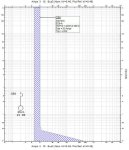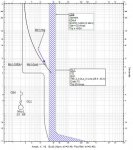DMG_1
Member
- Location
- Boston, MA, USA
I have a question. I have just recently started doing Coordination Studies and feel that I have a pretty good handle on understanding the TCC Curves. However, I do have a question on how to correctly interpret circuit breakers that only have an Instantaneous Trip. The circuit breaker I have a question about is the Siemensd "ED6-ETI" - Motor Circuit Protector. I understand that it has an Instantaneous Trip only but how to know how much time it will take to trip on the low end. The minimum & maximum trip portions of the curve become parallel with the Time Axis. I can assume 2 seconds but this is not what the curve indicates. Any ideas? I tried to upload a curve from SKM Software but the file was too big.


